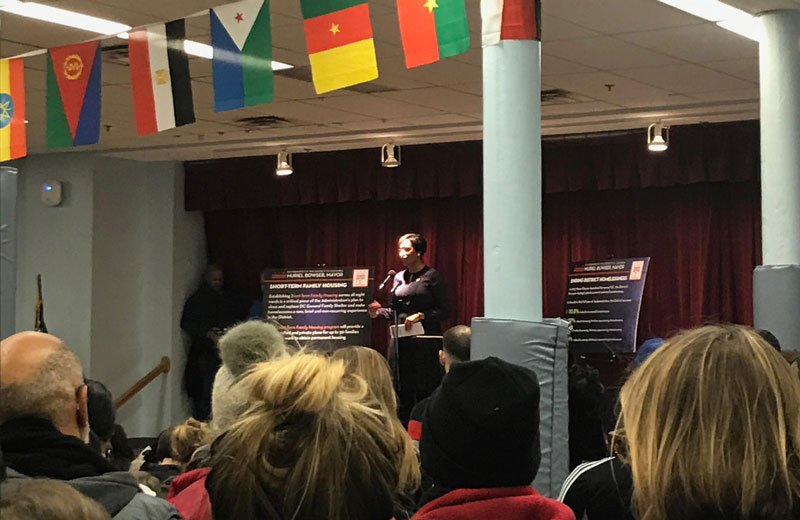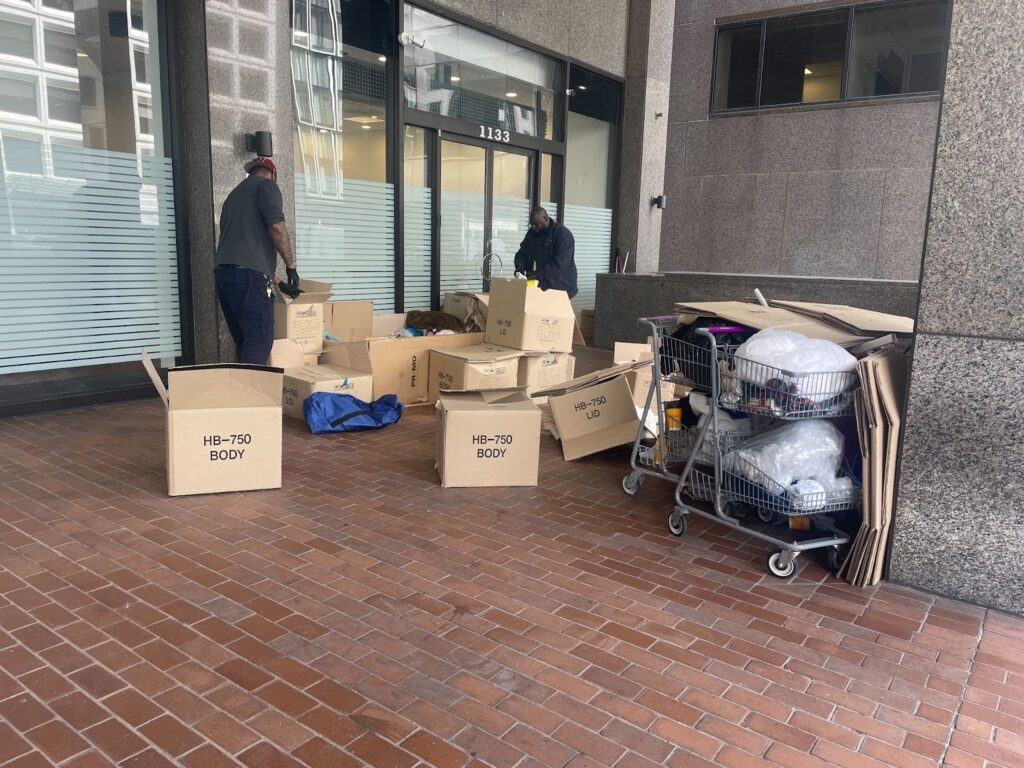Three hundred volunteers dispersed to all areas of D.C. last month to participate in the annual Point-In-Time (PIT) Count of the city’s homeless population. The count gathers data that will increase public awareness and help policymakers track progress towards ending homelessness in the District.
Participants first gathered at Thomson Elementary School in Northwest D.C., where Mayor Muriel Bowser addressed the crowd.
“We set out three years ago with what some people thought was an impossible goal: to end homelessness in our city,” Bowser said before participating in the count alongside volunteers.
The analysis of this year’s count will be released in May. From 2016 to 2017, results showed an 11 percent decline in the number of homeless people in the District, with a total of 7,473 people counted last year. The decline was attributed to a decrease in homeless families. However, the homeless population remains higher than it was in 2015, Bowser’s first year in office.
Chief of Staff of the Department of Human Services Larry Handerhan traveled with a group of volunteers to H Street NE, where he approached a man bundled in grey blankets underneath a sidewalk overhang.
“Do you have a place to stay tonight?” Handerhan asked. This question is one of the suggested conversation starters listed on the PIT survey sheet.
Handerhan explained the three most common reasons why homeless community members like this man may refuse shelter.
“They call it the three P’s: pets, possessions and partners,” he said.
Because shelters do not allow pets, any homeless person with a dog or cat may be deterred from going. Shelters also provide limited locker space, so a person experiencing homelessness may not go if it means having to give up any possessions. “Partners” refers to how couples who want to stay together may forego staying in shelters because they separate genders for safety reasons.
Shortly after midnight, Handerhan’s volunteer group moved on from H Street to Union Station. There, groups of homeless people answered survey questions concerning their path to homelessness, how long they had been experiencing homelessness, and more general questions such as about sexual orientation and gender identity.
In addition to survey questions, some PIT volunteers and respondents casually conversed about topics such as politics and even one man’s longing for a homemade chocolate chip cookie. Volunteers gave survey participants gift cards to McDonald’s, which remained open and busy at the heart of Union Station.
The PIT Count takes place on a single night in cities throughout the United States. Its goal is to provide a more accurate assessment of the numbers of people experiencing homelessness and their demographic characteristics. The results are shared with the Department of Housing and Urban Development (HUD), which uses the data to determine the effectiveness of present and future funding for local efforts to combat homelessness.
In D.C., the count has been conducted by the Community Partnership for the Prevention of Homelessness since 2001. It includes people on the street as well as people in shelters and transitional housing programs.
HUD only requires the unsheltered portion of the count be conducted every other year. But D.C. participates annually, in order to have more accurate data.
Results of the D.C. PIT count have been highly variable in the last few years. In 2015, the number of homeless people sleeping outdoors was counted at 544. In 2016, the number dropped to 318, then it rose to 897 in 2017. Handerhan said the change in numbers is likely related to temperature shifts.
When temperatures dip below 32 degrees Fahrenheit, a hypothermia alert is activated, which brings more services online and guarantees residents a right to shelter if they want it, according to the DHS website. Last year, the PIT count took place on an unseasonably warm night, which likely accounted in part for the higher number of homeless community members sleeping outdoors. This year, the count is expected to be lower because of the freezing temperatures.
One part of the community the PIT Count struggles to reach is homeless youth.
“We do a separate youth census because young people experiencing homelessness in the District tend to have very different life experiences and characteristics from the older population experiencing homelessness,” said Sean Barry, Communications Director of the DHS, who volunteered with the group that travelled to Union Station.
Solid Foundations DC, an initiative of Mayor Bowser’s administration that aims to end youth homelessness in the District, conducts its own census of youths experiencing homelessness separate from the PIT Count. In 2016, the census revealed that 587 unaccompanied minors were experiencing homelessness in the District.
“The work sometimes seems impossible and like we’re never nearing an end,” Mayor Bowser said, addressing the PIT Count volunteers. “But what we do see is that we’re driving down the number of people who are coming into our homeless services system.”
In 2017, the results of country-wide PIT Counts showed 553,742 people experiencing homelessness throughout the U.S., the first increase in seven years, according to HUD. The results showed that between 2016 and 2017, the number of people experiencing homelessness in unsheltered locations rose 9 percent. The results also showed that 40,799 youths were experiencing homelessness throughout the U.S., a sizable increase from the 35,686 homeless youth counted in 2016.
This PIT Count came shortly after Mayor Bowser announced the closure of D.C. General Family Shelter by the year’s end. The announcement has raised concerns, because construction on the eight smaller housing facilities built to replace D.C. General will not be completed by the time of the troubled shelter’s closure.








